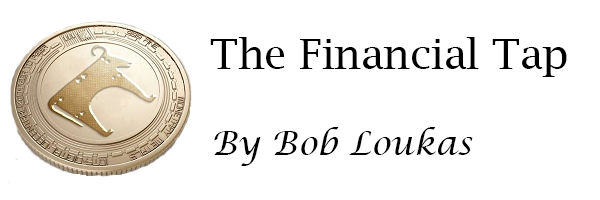Conscious Investing
How Investors can control emotions by following a well-defined Investment Plan
Analysis and Systems
Remember that both technical analysis (including Cycles) and trading/investing systems are far from
perfect in their results. The best systems provide a mathematical edge, but are imperfect, so you
should understand their benefits and limitations before you use them. If you start to believe that
you have found a foolproof system, you’re setting yourself up for a fall. It’s critical for you to
understand what type of trader you are, including your tolerance for drawdowns, your preferred
trade duration, whether you are willing to hold trades overnight, etc…and then identify the systems
that work best for you.
Losing Trades
Losing trades are a normal part of trading and investing. Even the world’s best traders have
losers, and these are not a reflection on the trader. Expect to have 40-50% of your trades be
losers. And a losing trade is not necessarily a bad trade – if you diligently followed all of the
Top 10 Investment Rules and your own trading plan. Investing is a game of probabilities. So long
as you follow the rules and execute the trade correctly, then congratulate yourself – the trade is a ‘good trade’, regardless of the outcome.
But to stay in a losing trade beyond your exit criteria (in your trading plan) is simply wrong. If
left unchecked, these losers could turn into a disaster for your financial health. You must be
diligent in avoiding an over-leveraged position which can move against you quickly to become an
oversized loss. There is no better way to deal with a losing trade than to simply close the
position as soon as it meets your stop-loss level. The longer you wait, watching the losses from a
losing trade snowball, the harder it becomes to cut the position.
The best option is always to avoid disasters by getting out at a designated stop loss point to
avoid a big loss. You can ask questions later. Don’t let your biases and convictions about market
direction guide your actions. Worst case, you can always reinitiate the same trade at a later time,
but only after you have closed the original trade and reassessed the new trade again from scratch.
Big losing trades are not only damaging to your portfolio, they can be psychologically and even
physiologically debilitating…and they can directly impact the performance of your following trades.
Big losers can rock your emotional boat, putting you off center and causing you to lose discipline on future trades.
The Markets Never Change
Whenever you think something in the markets might be different this time, consider whether you’re
trying to justify a bias towards a position. This often occurs either during a losing trade or
during euphoric and overly-extended moves. There is nothing new in the markets. Things might look
different for a time, but the different conditions will not last.
Be prepared and willing to be wrong in the markets. And understand that you will be wrong often.
Remember, the markets owe you nothing….and knowing this can make it easier to both close losing
trades and quickly change direction. The best traders are known for an ability to accept being
wrong, and to quickly shift as directed by the market. They respect the market and don’t allow their egos to drive their actions.
Have respect for what the markets are telling you. If you find the market acting or moving in an
unexpected way, try to understand why. Fighting the tape or the market is, over time, a losing
proposition.
Remain Humble
Always remember that you’re merely a guest of the market, a tiny spec in the grand array of traders
and institutions worldwide. Simply put, you don’t matter, at least not to the
market. What you think you know, others in the market already know. And if you think you’ve found
the next big secret, or that your system is far superior to others…chances are you’re wring. That
you’re either new to trading/investing and have been lucky…or you’ve been ignoring the facts about
your performance.
There is no room for ego in the markets. Far too many traders and investors talk a good game and
boast of great gains, but the reality is that most are net losers in the long run. You may hear
about a risky leveraged trade that paid off, but you never hear about the 3 other risky trades that
eclipsed the trumpeted gain and also took much of the principal. Egotists often ride losing trades
down 30%, 50%, or even 70%; their ego and stubbornness are always their undoing in the end.
Always Check Your Pulse
An investor’s emotional state plays a major role in his or her success – yet few investors openly
talk about their emotions. Whenever an investor is either too excited or too fearful about his
positions or performance, chances are he’s positioned incorrectly. The emotional sweet spot for
trading and investing is devoid of fluctuating and extreme emotions.
Remaining calm and having a clear state of mind is critical when trading the markets. The market is
never personal in its judgment of trades…but it always judges. Traders and investors often take the
market’s judgments personally, always to their detriment.
Try to remember your emotions on trades and use the knowledge to your advantage. When you suffer a loss beyond your trading plan or have a significant gain, try to remember and
catalogue the emotions that accompanied your entering the trade. It’s important that you learn to
use your emotions as a trading indicator. Identify your emotions and how they relate to specific
trades that you have made….and understand the results of those trades.
Always prepare mentally and emotionally for what may be ahead on any trade. Understanding potential trade outcomes will enable you to prepare emotionally for the
real-time action. Many investors can accurately forecast a coming move, but their lack of
emotional and mental preparation does not allow them to take advantage of the move. They have
difficulty managing themselves during panic-filled sell-offs or euphoric rallies.
Take Responsibility
As with anything in life, you must take full responsibility for your trading and investing actions.
Blaming someone else or some service for your results is a tell that you are avoiding the truth.
In the end we’re each responsible for our own wealth management and financial success.
I often hear statements like “the game is fixed”, or “the plunge protection team killed my trade”,
or “they’re manipulating the market against me”. If you find yourself thinking or saying things like this, you haven’t yet accepted that the market owes you nothing. You must take
responsibility for your trades.
A Chinese proverb is instructive: He who blames others has a long way to go on his journey. He who
blames himself is halfway there. He who blames no one has arrived.
Discipline
Learn to be disciplined with your trading and investing; there are no shortcuts to financial success. One must strive to remain focused at all times, to follow a plan, to practice trading,
and to continuously work to improve. Successful investing is a journey, not a destination.
Like a world class practitioner of any discipline, an investor must strive to constantly get better
at his craft. He needs to be continually working to raise his skill level and to broaden his
understanding of a variety of topics including economic theory, the real economy, market events,
trading systems, technical analysis and charting, and fundamental analysis. The goal is to be aware
of everything related to trading/investing, and to fully understand those that are related to your style and personal system.








